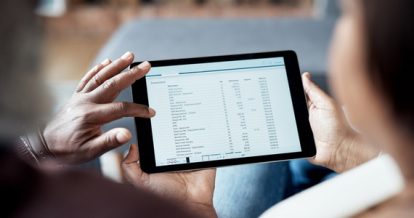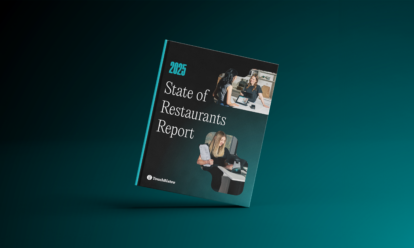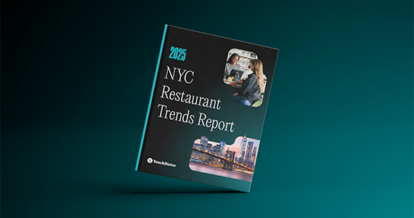Use this free restaurant balance sheet template to track your assets, liabilities, and equity.
What is a Balance Sheet for Restaurants?
A balance sheet for restaurants is a key financial statement that lists your restaurant’s assets, liabilities, and equity at a given point in time. In other words, it’s a snapshot of what your business owns and owes, as well as the amount invested.
A balance sheet template is a very important money management tool because it provides a succinct overview of your business’s financial health, while also aiding in short- and long-term forecasting. And when you use a balance sheet template alongside other financial documents, such as your restaurant profit and loss statement and your statement of cash flows, you can get a complete picture of how well your business is doing.
Of course, regularly adding up those numbers can take time, which is why a simple balance sheet template can be your secret weapon. Our free balance sheet template is fully customizable and easy to use in Excel or Google Sheets. After downloading the restaurant balance sheet example, simply open the spreadsheet in the program of your choice and begin plugging in the appropriate numbers.
Our free balance sheet template is fully customizable and easy to use in Excel or Google Sheets. After downloading the balance sheet template, simply open the spreadsheet in the program of your choice and begin plugging in the appropriate numbers.
Why Does Your Restaurant Need a Balance Sheet?
Maintaining a balance sheet is crucial for the financial health and growth of your restaurant. Here are tree key reasons why every restaurant needs a balance sheet:
To Summarize Your Business’ Financial Health
A balance sheet provides a clear summary of your restaurant’s financial health at any given moment. By listing your assets, liabilities, and equity, you can quickly assess whether your business is in a strong financial position or if there are areas that need improvement. This comprehensive view helps you understand the financial stability of your restaurant, making it easier to make informed decisions.
To Support Business Forecasting
A balance sheet is not just a static document – it’s a vital tool for business forecasting. By analyzing trends in your assets and liabilities, you can make more accurate predictions about future financial performance. This foresight is essential for strategic planning, whether you’re looking to expand, invest in new equipment, or streamline operations. Regularly updated balance sheets enable you to identify potential financial challenges and opportunities ahead of time.
To Stay on Top of Financial Management
Regularly updating and reviewing your balance sheet can help you stay on top of your restaurant’s financial management. By consistently tracking your assets and liabilities, you can make informed decisions about budgeting, investing, and managing debt. This is especially useful if you combine your learnings from this document with insights from your profit and loss statement and other financial documents. Here are a few tips on how to use your balance sheet effectively:
- Monitor cash flow: Keep an eye on your current assets and liabilities to ensure you have enough money to cover your short-term obligations.
- Manage debt: Use the balance sheet to track your debt levels and create strategies for paying down high-interest liabilities.
- Plan for growth: Analyze your long-term assets and liabilities to identify opportunities for expansion and investment.
You need an accurate balance sheet to reap all these benefits and sometimes it can be hard to know where to start. To help you easily identify your assets (everything your business owns) and liabilities (everything your business owes), we’ve listed several examples of each in the template.
What to Include in Your Balance Sheet
When you’re filling out the balance sheet template, you will first have your three key sections: assets, liabilities, and equity. In the assets section, we’ve further broken things down into current assets and fixed assets. In the liabilities section, you’ll find a similar division between current liabilities and long-term liabilities.
Assets
- Current assets include cash, accounts receivable, inventory, prepaid liabilities, and other liquid assets.
- Fixed assets include property, equipment, vehicles, trademarks/copyrights, and other assets that have a longer useful life and are not expected to be liquidated any time soon.
Liabilities
- Current liabilities include accounts payable, utility bills, short-term loans, rent, income tax, and other monetary obligations that are due within a year.
- Long-term liabilities include mortgages, long-term loans, deferred income taxes, and other debts that are due in more than a year.
After you’ve input all your assets and liabilities, the balance sheet template will help you subtract your total assets from your total liabilities. This will give you your equity, also known as your retained earnings.
Of course, this number is simply a static snapshot of your restaurant’s current financial status. You’ll want to update this free restaurant balance sheet template in Excel or Google Sheets regularly to monitor the financial health of your business.
Tips for Filling Your Balance Sheet
Filling out a balance sheet for restaurants is usually straightforward, but mistakes can lead to inaccuracies and miscalculations. Here are some tips to help you avoid mistakes and get the most out of your balance sheet.
- Consider asset depreciation: Depreciation is the wear and tear on your long-term assets over time. Not accounting for depreciation can inflate the value of your assets and give you an unrealistic view of your financial situation. Ensure you regularly update the depreciation values of your assets to maintain an accurate balance sheet.
- Use consistent and most recent inventory valuation: Inventory can be tricky to value accurately. Using outdated or incorrect inventory numbers can distort your current assets, equity, and overall financial picture. Using consistent valuation methods and recent inventory counts are essential to avoid discrepancies.
- Double-check your work: Filling out balance sheets is a manual process so you might make data entry errors. Leave some time in your process to double-check numbers and correct errors so you can maintain an accurate, reliable balance sheet.
- Update your balance sheet regularly: A balance sheet is most useful when it’s up to date. Regularly updating your balance sheet, such as monthly, helps you stay on top of your financial health and plan quickly for any changes.
Armed with these tips and the downloadable restaurant balance sheet example, you’ll be completing accurate balance sheets in no time. And a well-maintained balance sheet is an indispensable tool for any restaurant owner. It provides a clear and comprehensive snapshot of your financial health, supports strategic decision-making, and helps you plan for the future. By using our free, customizable balance sheet template in Excel or Google Sheets, you can streamline your financial management processes and focus on what you do best – running a successful restaurant.





